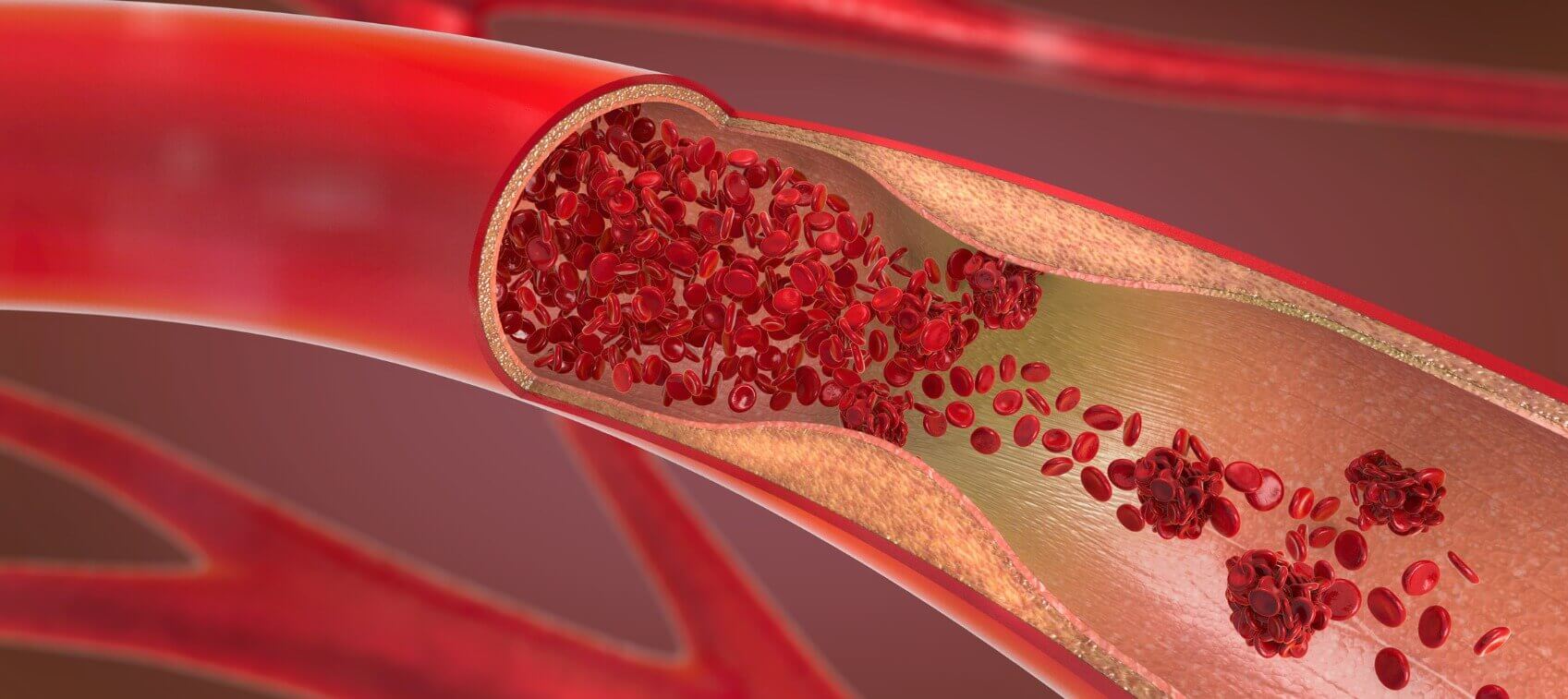
Peripheral artery disease is a circulatory problem in which arteries are narrowed, reducing blood flow to your limbs. Peripheral artery disease (PAD) is very common and can affect your limbs, especially your legs. This occurs when your limbs don’t receive enough blood flow to keep up with demand.
This may cause claudication, which is leg pain when walking. Peripheral artery disease is typically a sign of fatty-deposit buildup in your arteries.
The good thing is, there are numerous ways to reverse the effects brought on by PAD, mainly having to do with lifestyle. If you exercise, adopt a healthier diet, and quit poor habits such as smoking, you will likely see signs of improvement.
What Causes Peripheral Artery Disease?
Peripheral artery disease, like most cardiovascular disease, is caused by the buildup of plaque in the arterial walls that narrows the arteries, limiting blood flow. This is known as atherosclerosis.
This plaque buildup is responsible for leading to both heart disease, and heart attacks. The biggest difference between peripheral artery disease and coronary artery disease is the location.
Coronary artery disease affects the arteries supplying blood flow to the lower heart, while peripheral artery disease, as the name suggests, affects the peripheral arteries that deliver blood to the peripheral, or outer regions of the body.
Symptoms of Peripheral Artery Disease
Many people suffering from peripheral artery disease may not even know it, as some have very mild or even no symptoms. Claudication (leg pain) is a symptom of peripheral artery disease that many people write off as a normal sign of aging. This is not always the case though, as leg pain can be a direct symptom of peripheral artery disease, and should be noted if occurring.
Claudication feels like muscle pain or cramping in your limbs while walking or doing other activities. It disappears once the exercise is stopped after a few minutes of rest. The location that the pain occurs depends on the location of the narrowed artery, most commonly in the calf.
Claudication’s severity varies from wild discomfort, to extreme pain. Severe claudication makes it difficult to walk, move, or do the types of physical activity you enjoy.
Symptoms of peripheral artery disease include:
- Claudication (pain in your legs or arms)
- Cramping in your hips, legs, or calves while doing physical activity
- Continual sore on your lower legs and feet
- Coldness in you lower legs and feet, often on one side
- Discoloration or a change of color in your legs
- Hair loss or slower growth on feet and legs
- Slow nail growth
- Shiny appearing leg skin
- Weak or no pulse in your legs or feet
- Erectile dysfunction
- Arm pain, aching, and cramping that occurs during manual or menial tasks
When peripheral artery disease is left to progress, pain can occur when you’re resting, and can be painful enough to cause disruption. It’s extremely important to pay attention to the signs you experience at the beginning of peripheral artery disease, as to help it not progressive further.
Worsening symptoms can lead to mobility impairment, physical movement restriction, and loss of independent living. In the most extreme cases it might even lead to gangrene, amputation, or premature death.
Peripheral artery disease may be a standalone condition, but can also serve as a warning sign for other heart problems. Meaning, if you have peripheral artery disease, you are at higher risk of other heart conditions such as a heart attack, stroke, or heart failure.
Risks of Atherosclerosis
Peripheral artery disease is often brought on by atherosclerosis -- which occurs when fatty deposits build up on your artery walls and reduce blood flow.
Atherosclerosis conversation usually circles around the heart; however, the disease usually affects arteries throughout your body. When atherosclerosis occurs in the arteries that supply your limbs blood, peripheral artery disease is caused. Though less common, artery disease may be caused by blood vessel inflammation, limb injury, unusual anatomy of your muscles or ligaments, or exposure to radiation.
Who Is at Risk for Peripheral Artery Disease?
If you are experiencing numbness in your limbs, or leg pain don’t write these off. This may not be just a normal part of aging, and could be signs of peripheral artery disease.
Even if you don’t experience these direct symptoms, there are other risk factors for getting peripheral artery disease that might not show symptoms directly.
This includes those who are:
- Over the age of 65
- Over the age of 50, if you have a history of diabetes or smoking
- Under the age of 50. if you suffer from high blood pressure, are diabetic or prediabetic, or suffer from obesity
Factors that will increase your chances of suffering from peripheral artery disease mainly have to do with diet, exercise, and smoking's negative effects on your heart. Some of the people most at risk, or those with diabetes, as this disease reduces and limits blood flow.
Other risk factors that could lead you to having peripheral artery disease:
- Increasing age
- Diabetic, or prediabetic
- Obesity
- High blood pressure
- High cholesterol
- Natural aging (risk goes up after 65)
- Family history of PAD, other heart disease, or strokes
- Homocysteine
How To Go About Reversing Peripheral Artery Disease
Preventing or reversing peripheral artery disease is very similar to preventing coronary artery disease, hypertension, and other cardiovascular problems.
Regular exercise, a heart-healthy diet, maintaining your ideal weight consistently, and regularly managing your stress are key in helping reverse the effects of peripheral artery disease.
Additionally, paying attention to the two risk factors of smoking and diabetes is essential, as these can be extremely harmful to your heart. Smoking is closely related to peripheral artery disease in fact, some people refer to it as a “smoker’s disease”.
Obviously quitting smoking is not an easy task, but let this motivate you to try: 80% of people dealing with peripheral artery disease are current or former smokers.
Diabetes elevated the blood sugar, damaging the arteries and contributing to atherosclerosis. Approximately 20-30% with peripheral artery disease suffer from diabetes.
Some tangible ways of helping reverse and prevent peripheral artery disease includes:
Physical Movement and Activity
While exercise might be the last thing you want to try when experiencing leg numbness or other pain caused by peripheral artery disease, it’s incredibly important.
Physical movement doesn’t have to be a big commitment, in fact it can be simply walking down your road, around your house, or dancing to your favorite song. It is sometimes recommended for supervised exercise known as cardiac rehabilitation. It’s also important to begin moving slowly, with walks or light treadmill use, or during periods of claudication.
The poor circulation in your leg arteries is due to that plaque buildup, so remember that walking might hurt, but it will help.
Heart Healthy Diet
Sticking to a heart-healthy diet that’s low in saturated, trans, or processed fats will be extremely important in reversing peripheral artery disease. Stick to plant based foods such as vegetables, fruits, and whole grains to help lower your blood sugar and cholesterol.
Nutrient that aid in reversing peripheral artery disease include:
- Coenzyme Q10 (100-300 mg daily)
- Magnesium (200-600 mg daily)
- L-carnitine (1-3 grams daily)
- D-ribose (5 grams, 3 times times daily)
- Omega-3s (1-2 grams of fish or squid oil daily)
- Daily multivitamin (with antioxidants and other essential vitamins and minerals)
Foods for Heart Health:
- Greens, such as spinach and kale
- Whole grains, such as barley, buckwheat, and rye
- Berries
- Avocados
- Walnuts
- Fish Oil and Omega-3’s
- Beans
Quit Smoking
It’s no secret that smoking is horrible for your heart and lungs. Tobacco, nicotine, and both cigarettes and vaping are all major risk factors for developing peripheral artery disease.
The health benefits you will experience from quitting smoking will far outweigh the high that smoking might give you. It will both improve your quality and length of life, while also helping reverse the effects of peripheral artery disease.
Medication
You may be prescribed medication for high blood pressure, to lower cholesterol, or to prevent blood clots. While medication is helpful, it’s important that you approach your health with an integrative approach.
Managing Your Diabetes
Diabetes puts you at huge risk for peripheral artery disease, and managing it is key in reversing PAD’s effects.
Diabetes puts you at greater risk of high blood pressure, and monitoring your blood sugar is extremely important. Managing your diabetes looks similar to maintaining a heart healthy diet as mentioned above, while also monitoring your blood sugar. This step is absolutely a necessity if you have diabetes.
Conclusion
Peripheral artery disease affects many people, but it’s not too late to follow an integrative approach to bettering your overall health, while also preventing and reversing peripheral artery disease.


